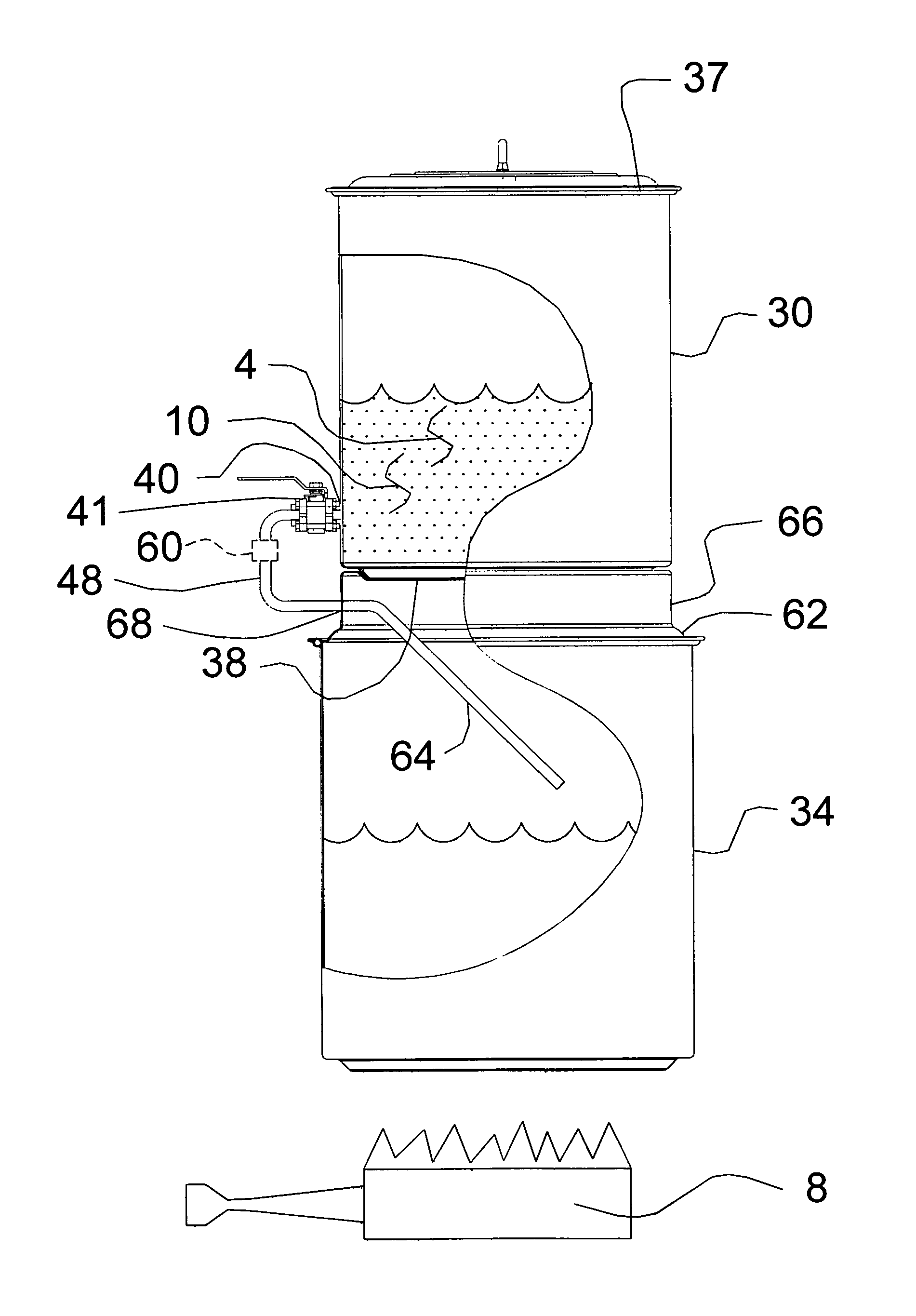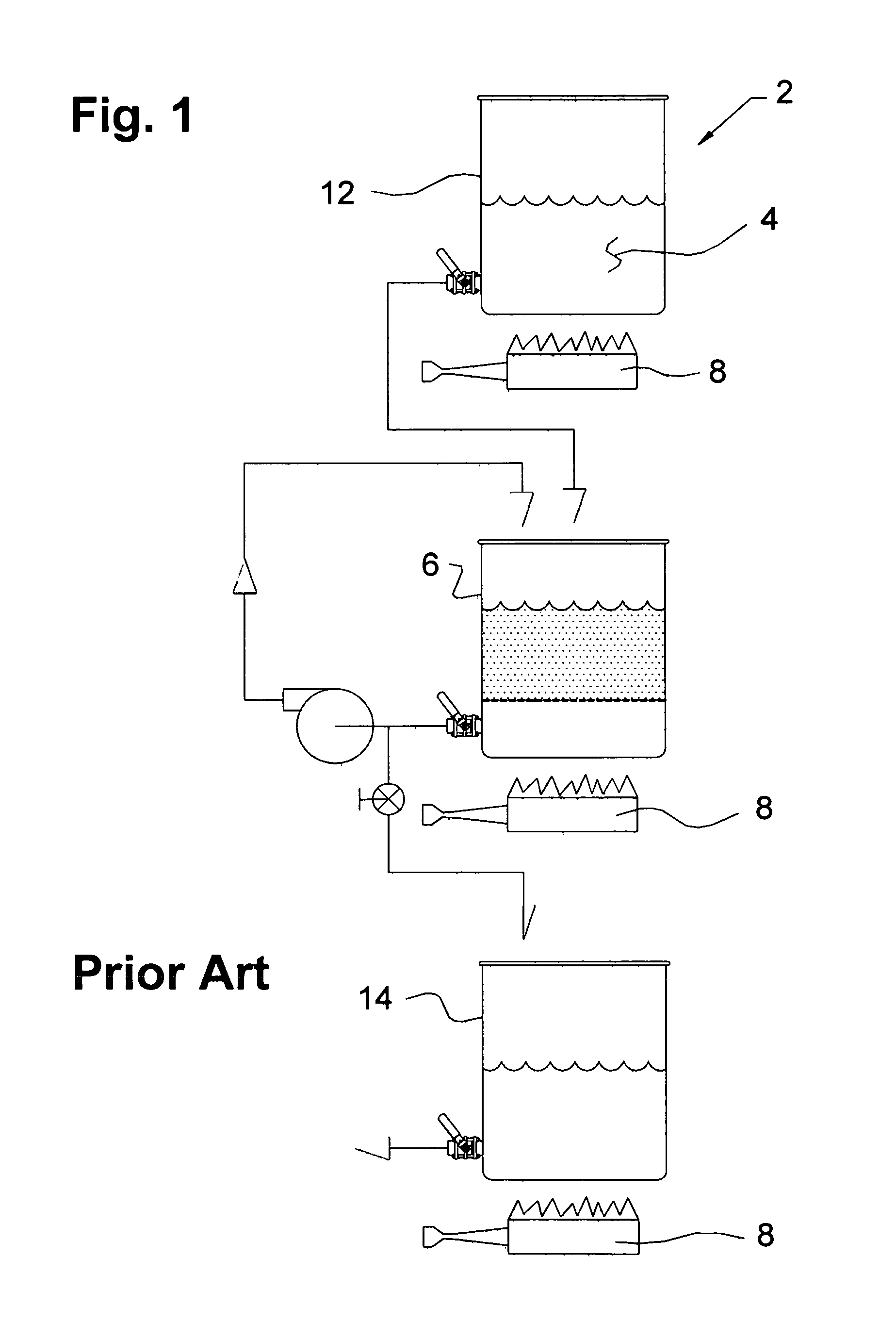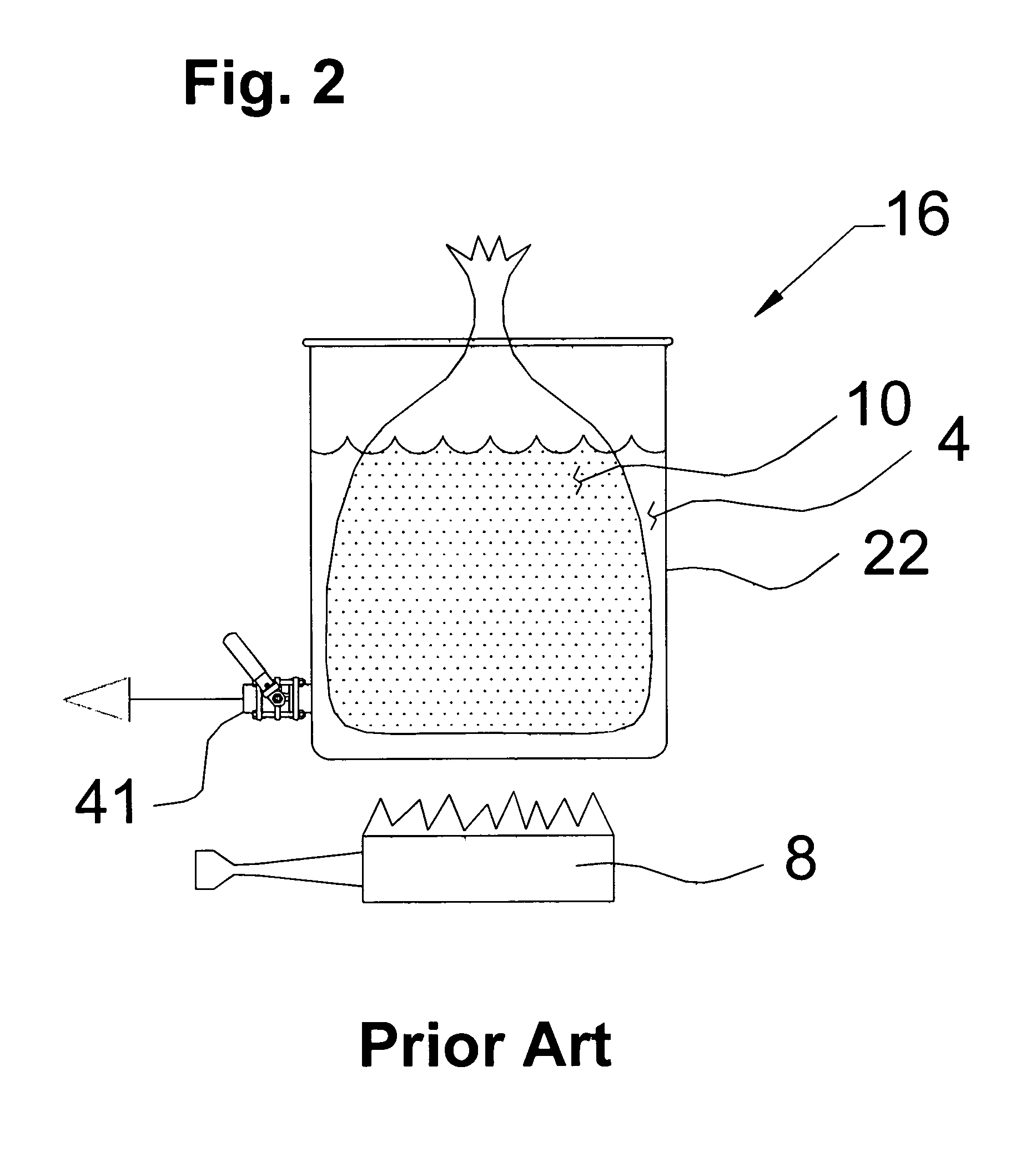Recirculation infusion mash system
a mash system and mash technology, applied in the field of recirculation infusion mash system, can solve the problems of extended amount of time needed to prepare wort, difficult control of temperature in the mash tun, and poor extraction efficiency
- Summary
- Abstract
- Description
- Claims
- Application Information
AI Technical Summary
Benefits of technology
Problems solved by technology
Method used
Image
Examples
Embodiment Construction
[0016]In the prior art schematic of FIG. 1, a conventional 3 tier system 2 is shown. The 3 tier setup includes a preestablished amount of water 4 placed in a first pot, a mash pot 6 and heated by a heating unit 8 to a preestablished temperature. Grain 10 is added at the preestablished temperature and the preestablished temperature is stabilize. Separately, a preestablished amount of sparge (rinse) water 4 is added to a second pot, hot liquor tank (HLT) 12. The hot liquor tank 12 is heated to a preestablished temperature and held at that temperature until needed for sparging at the end of a mashing process 24 within a third pot 14. Thus, the 3 tier system uses three (3) pots 6, 12, 14.
[0017]In the prior art 3 tier system of FIG. 1, a predetermined volume of water 4 is placed in the hot liquor tank 12 and a remainder of the water 4 is placed in the mash pot 6. In general, about half of the total water 4 needed for the brew is added to each pot 12, 6. It is recognized that this ratio c...
PUM
| Property | Measurement | Unit |
|---|---|---|
| specific gravity | aaaaa | aaaaa |
| physical contacting relationship | aaaaa | aaaaa |
| liquid transfer mechanism | aaaaa | aaaaa |
Abstract
Description
Claims
Application Information
 Login to View More
Login to View More - R&D
- Intellectual Property
- Life Sciences
- Materials
- Tech Scout
- Unparalleled Data Quality
- Higher Quality Content
- 60% Fewer Hallucinations
Browse by: Latest US Patents, China's latest patents, Technical Efficacy Thesaurus, Application Domain, Technology Topic, Popular Technical Reports.
© 2025 PatSnap. All rights reserved.Legal|Privacy policy|Modern Slavery Act Transparency Statement|Sitemap|About US| Contact US: help@patsnap.com



